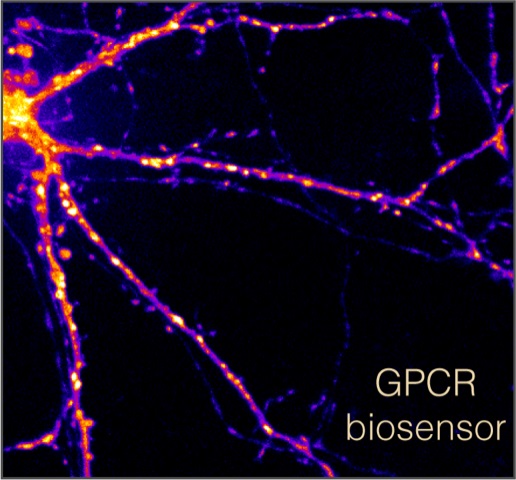Advances for the study of neuronal communication
Cognitive processes in the brain rely on communication between brain cells. Transfer of information occurs when a neuron releases chemical signals into the extracellular environment, which then bind to sensory receptors in a neighboring neuron. Neuronal communication is tightly regulated by G protein-coupled receptors (GPCR) and their ligands that critically impact neuronal physiology at multiple time scales, but GPCR signal transduction remains difficult to study.
Can optical tools from cellular biology studies help decipher neuronal communication?
The challenge of studying the regulatory role of GPCRs in neuronal communication has led researchers from Prof. Miriam Stoeber’s laboratory in collaboration with Dr. Damien Jullié at the University of California San Franscisco, to review recent technological advances in fluorescence microscopy and optical biosensors. These new tools now allow investigating neuromodulation with unprecedented resolution in individual neurons. For example, several genetically encoded biosensors are able to directly detect GPCR and transducer activation in living cells.

Neuron with a gradient of GPCR activation ranging from yellow the highest activation to blue the lowest activation. © Laboratory of Prof. Miriam Stoeber, UNIGE
Interested to learn more ?
To discover the new tools available to study the role of GPCRs in regulating neuronal communication and the potential new research opportunities they open up, download their review published in the Journal of Neuroscience Methods.
2 Dec 2021
